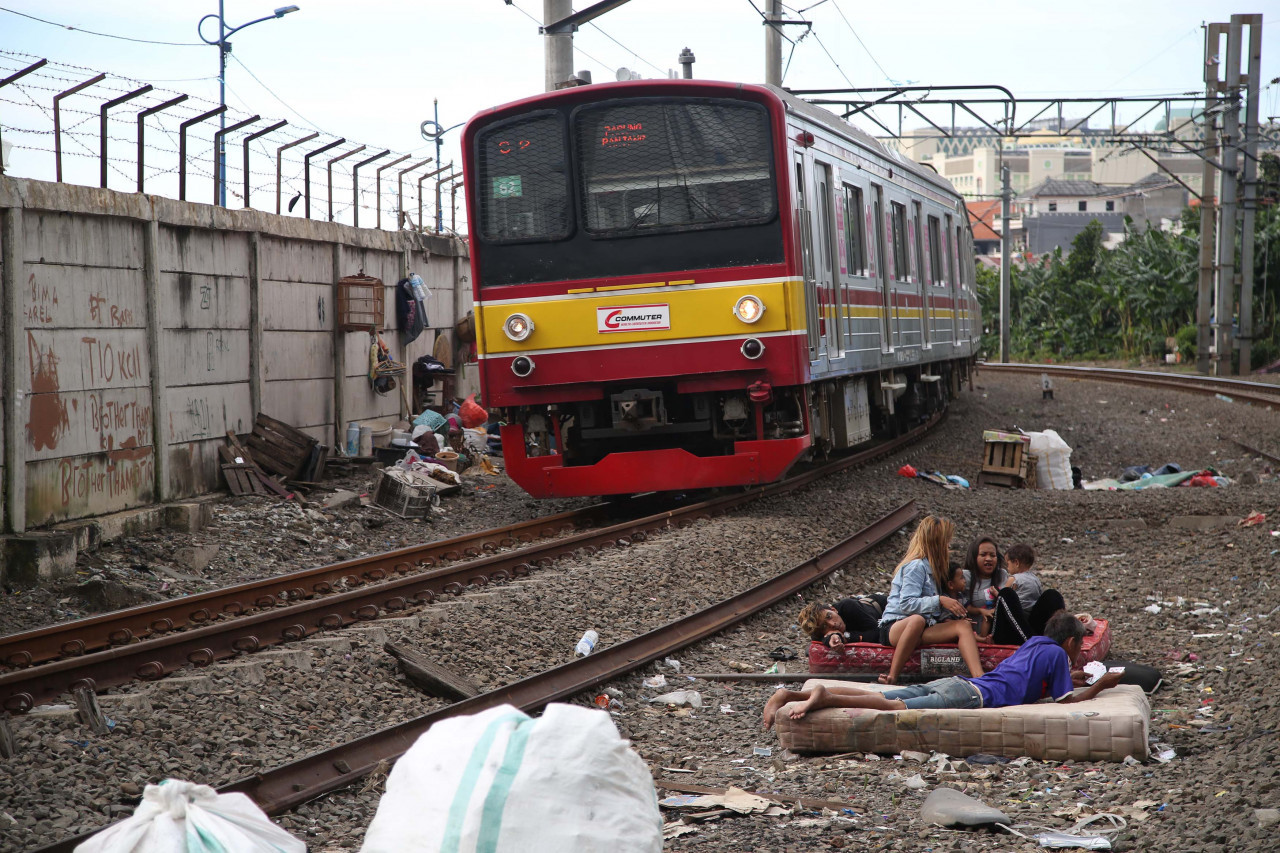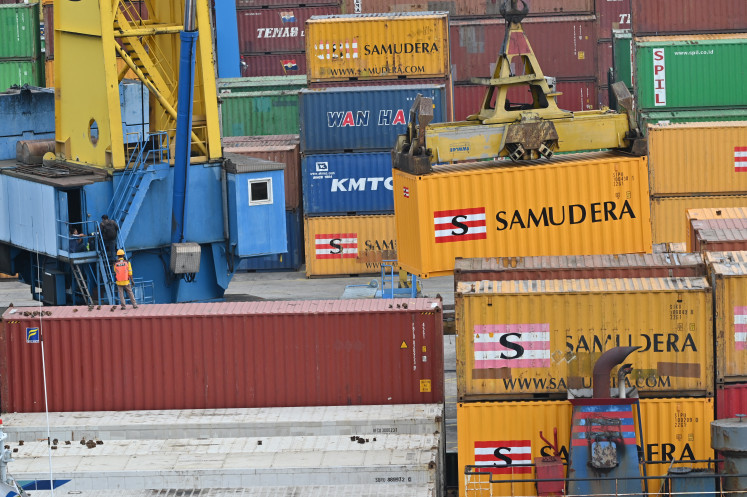Popular Reads
Top Results
Can't find what you're looking for?
View all search resultsPopular Reads
Top Results
Can't find what you're looking for?
View all search resultsPoverty rate hits three-year high
Change text size
Gift Premium Articles
to Anyone
T
he pandemic has pushed 2.76 million more Indonesians into poverty, bringing the country’s poverty rate to the highest level since March 2017.
Amid soaring job losses and business closures last year, the number of citizens living below the poverty line reached 27.55 million in September 2020, up significantly from 24.79 million a year earlier, according to data from Statistics Indonesia (BPS). As a result, the poverty rate climbed to 10.19 percent from 9.22 percent over the same period.
“Although there was an increase in the number of poor people because of COVID-19, the increase in Indonesia was not as severe as predicted, thanks to various social protection programs,” BPS head Suhariyanto said in a virtual press conference on Monday.
He cited the government’s social aid programs and the preemployment card program, which combines social assistance with upskilling for people affected by the virus outbreak, including workers and small business owners. The former’s coverage was expanded from Indonesia’s bottom 40 percent to its bottom 60 percent.
The rise in poverty comes after Indonesia booked last year its first economic recession since the 1998 Asian financial crisis, as the country’s gross domestic product (GDP) shrank for two consecutive quarters. The country’s GDP contracted 2.07 percent in 2020.
Read also: Breaking: Indonesia enters first recession since 1998 on 3.49% Q3 contraction
To measure the poverty level, BPS uses the concept of citizens’ ability to fulfil their basic needs, both for food and nonfood goods, and poor citizens are defined as those whose monthly spending per capita falls below the poverty line.
The national poverty line stood at Rp458,947 (US$33) in monthly spending per capita in September 2020, of which 73.87 percent was for food and the rest was for housing, utilities, fuel, education and more.
The poverty rate increase in urban areas is more pronounced than in rural areas, as the pandemic was more prevalent in urban centers. Poverty in urban areas was up 1.32 percentage points annually at 7.88 percent, while in rural areas, an increase of 0.60 percentage points brought the poverty rate to 13.20 percent.
Asep Suryahadi, a senior researcher at Jakarta-based SMERU Research Institute, said the rise in the poverty rate was relatively small compared to the deep economic contraction of 2 percent last year.
In an April 2020 report, Asep and other SMERU researchers estimated that 1 percent economic growth in 2020 – the worst-case-scenario in the study – would push 8.45 million Indonesians into poverty. This would have raised the poverty rate to 12.37 percent.
Similarly, the World Bank had also estimated in its Indonesia Economic Prospects 2020 report that, without any social assistance response, as many as 8.5 million Indonesians could be pushed into poverty in 2020 due to the COVID-19 crisis.
“This probably shows the effect of social assistance that, for all its flaws, was quite successful in suppressing the rise in poverty, so that a worse [outcome was avoided],” Asep told The Jakarta Post via text message on Tuesday.
Development economist Vivi Alatas, once the World Bank’s lead economist for Indonesia, said the poverty rate remained below more negative estimates because of government safety nets and because some economic sectors were less affected than feared.
She said some households also made ends meet as family members found new jobs and started online businesses. Moreover, some highly-impoverished regions might be less densely-populated and thus, saw relatively lighter viral outbreaks.
"It is also necessary to analyze the rise and fall in prices of various commodities that make up the poverty line," Vivi told the Post via text message on Wednesday.
BPS data show that key Indonesian staple food prices declined between March and September last year, even though the prices of less common food, such as beef and flour, went up. The prices of rice, chicken and eggs, which contribute the largest shares to the poverty line calculation, declined 0.49 percent, 3.52 percent and 6.12 percent, respectively.
To keep households afloat, the government allocated last year Rp 695.2 trillion in economic recovery programs. For social assistance, the government spent a total of Rp 220.39 trillion in 2020, exceeding the allocation by around 8 percent.
The government aims to spend Rp 627.9 trillion for recovery programs in 2021, including Rp 150.21 trillion for social assistance.
Read also: Govt disburses 26% of pandemic stimulus, mostly to fund social aid programs
With last year’s social assistance, 5 million people were prevented from falling into poverty, according to a Finance Ministry statement on Monday. The government wanted to bring down the poverty rate to between 9.2 and 9.7 percent.
“Given the latest economic trend, the government is optimistic, yet remains vigilant, that the pandemic can be brought under control and that social and economic activities can gradually recover, so that the poverty and unemployment rates can go down again in the future,” said the ministry’s Fiscal Policy Agency (BKF) head, Febrio Kacaribu, in a statement.
Economist Piter Abdullah of the Center for Reform on Economics (CORE) Indonesia said the purpose of the social assistance was to reduce poverty rather than prevent it.
He said such programs aimed to improve poor people’s resilience in the face of the economic slump, so that they could maintain a decent standard of living, such as three meals a day. Long-term poverty reduction, however, required restoring the economy to create jobs.
“Even if social assistance reaches the right target, the number of poor people will still rise amid the pandemic,” Piter told the Post via text message on Wednesday.










